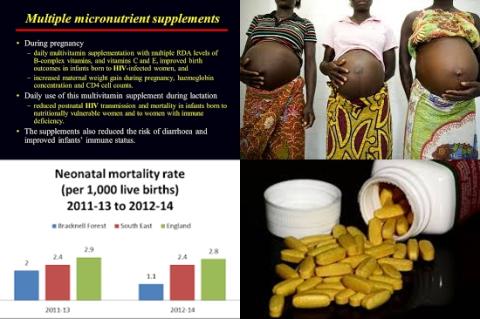
Objectives:
Micronutrient deficiencies are common among women in low-income and middle-income countries. Data from randomised trials suggest that maternal multiple micronutrient supplementation decreases the risk of low birthweight and potentially improves other infant health outcomes. However, heterogeneity across studies suggests influence from effect modifiers. Therefore, this review article (meta-analysis) has been conducted.
What are the effects of individual-level modifiers of multiple micronutrient supplements on stillbirth, birth outcomes and infant mortality in low-income and middle-income countries?
Study design:
This review article included 17 RCTs, done in 14 low-income and middle-income countries, which compared multiple micronutrient supplements containing iron-folic acid versus iron-folic acid alone in 112,953 pregnant women.
All trials used multiple micronutrient supplements preparations that included at least eight micronutrients in addition to iron-folic acid. Eight trials used the United Nations multiple micronutrient preparation.
All trials were graded low or moderate risk of bias. Funnel plots did not provide clear evidence of publication bias or small study effects.
Results and conclusions:
The investigators found multiple micronutrient supplements containing iron-folic acid (≤30 mg iron) provided a significantly 15% reduction in neonatal mortality for female neonates compared with male neonates [RR = 0.85, 95% CI = 0.75-0.96, p value for interaction = 0.007].
The investigators found iron-folic acid supplementation alone (60 mg iron) provided a non-significantly 6% higher neonatal mortality risk for female neonates compared with male neonates [RR = 1.06, 95% CI = 0.95-1.17].
The investigators found multiple micronutrient supplements resulted in greater reductions in
-low birthweight [RR = 0.81, 95% CI = 0.74-0.89, p value for interaction = 0.049];
-small-for-gestational-age births [RR = 0.92, 95% CI = 0.87-0.97, p = 0.03] and;
-6-month mortality [RR = 0.71, 95% CI = 0.60-0.86, p = 0.04] in anaemic pregnant women (haemoglobin 110g/L) as compared with non-anaemic pregnant women.
The investigators found multiple micronutrient supplements also significantly reduced risk of preterm birth among underweight pregnant women (BMI 18.5 kg/m2) with 16% [RR = 0.84, 95% CI = 0.78-0.91, p = 0.01].
The investigators found initiation of multiple micronutrient supplements before 20 weeks gestation provided greater reductions in preterm birth risk [RR = 0.89, 95% CI = 0.85-0.93, p = 0.03].
The investigators found generally, the survival and birth outcome effects of multiple micronutrient supplementation were greater with high adherence (≥95%) to supplementation.
The investigators found multiple micronutrient supplements did not significantly increase the risk of stillbirth or neonatal, 6-month, or infant mortality, neither overall or in any of the 26 examined subgroups.
The investigators concluded antenatal multiple micronutrient supplements improve survival for female neonates and provide greater birth-outcome benefits for infants born to undernourished and anaemic pregnant women. Early initiation in pregnancy (before 20 weeks gestation) and high adherence (≥95%) to multiple micronutrient supplements also provide greater overall benefits. Studies should now aim to elucidate the mechanisms accounting for differences in the effect of antenatal multiple micronutrient supplements on infant health by maternal nutrition status and sex.
Original title:
Modifiers of the effect of maternal multiple micronutrient supplementation on stillbirth, birth outcomes, and infant mortality: a meta-analysis of individual patient data from 17 randomised trials in low-income and middle-income countries by Smith ER, Shankar AH, […], Sudfeld CR.
Link:
http://www.thelancet.com/journals/langlo/article/PIIS2214-109X(17)30371-6/fulltext
Additional information of El Mondo:
Find more information/studies on food fortification/malnutrition right here.